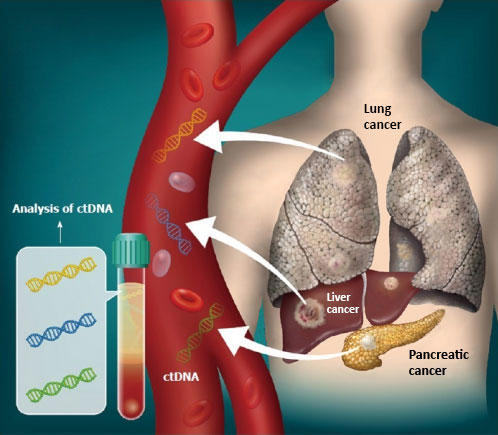A surgeon can excise breast cancer from the body, but even the most skilled scalpel may not be able to remove every cell — especially when the cells have spread from the original disease site elsewhere in the body. This proliferation and migration of breast cancer cells involves many still unknown molecular means, but researchers at Hiroshima University have elucidated at least one mechanism. With the discovery, they may have also uncovered how short chains of protein building blocks could serve as a novel anticancer drug.
The team published their findings on April 9 in the British Journal of Pharmacology . They focused on vasoactive intestinal peptide receptor-2 (VIPR2), a receptor molecule that binds with two different hormones. In health, VIPR2 helps regulate the circadian rhythm, the immune system, insulin secretion and much more. However, the receptor can be overexpressed, meaning too much of it exists in the body. In overexpression, VIPR2 can contribute to increased breast cancer cell growth and metastasis. Also in overexpression, VIPR2 can bind with itself to form what's called a dimer.
According to co-corresponding author Satoshi Asano , assistant professor in the Department of Cellular and Molecular Pharmacology at Hiroshima University's Graduate School of Biomedical and Health Sciences , protein receptors like VIPR2 are known to homodimerize — meaning two of them can bind to each other — and that these dimeric molecules may have different properties from the individual constituents, known as monomers.
"However, it was unclear whether VIPR2 monomers directly interact with each other and what function the dimeric receptor has in breast cancer cells," Asano said.
In this study, the researchers first demonstrated that VIPR2 do interact with one another to become homodimerized. In cell models and in a mouse model, they then showed that dimeric VIPR2 is involved in breast tumor growth and metastasis via the binding site through which the two VIPR2 molecules interact with one another. This binding site, known as the transmembrane domains (TM)3 and 4, can either enhance dimerization between two VIPR2 molecules or prevent the binding. It comes down to whether the cells express chains of amino acids — the building blocks of proteins — called TM3-4 peptides. These peptides specifically disrupt how the transmembrane domains interact with VIPR2.
"We found that VIPR2 moved further apart in cells expressing TM3-4-peptides, suggesting that TM3-4 prevents VIPR2 dimerization," Asano said. "Breast cancer cells stably expressing TM3-4 region exhibited suppressed tumor growth and lymph-node metastasis."
This process of breaking apart dimers is called de-dimerization.
"VIPR2 de-dimerized by expression of TM3-4 had reduced affinity for specific proteins and was no longer involved in the activation of signaling pathways involved in cell proliferation and metastasis," said co-corresponding author Yukio Ago , professor in the Department of Cellular and Molecular Pharmacology at Hiroshima University's Graduate School of Biomedical and Health Sciences. "Since the expression of TM3-4 was able to suppress the progression of breast cancer cells, we plan to verify the anticancer effect of the purified TM3-4 peptide in animal models. Our goal is to develop novel anticancer drugs that target cancer cells in which dimerization is enhanced due to increased expression of VIPR2."






